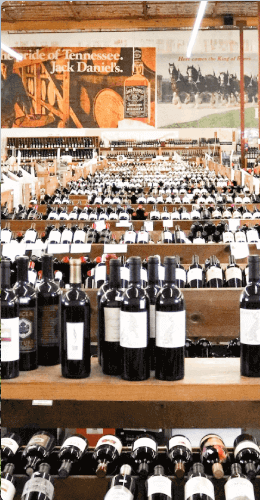Wine Region Profile: Finger Lakes, New York

More than perhaps any other world wine region, New York’s Finger Lakes witnessed a vast transformation over the past century, most of it recently. It now counts as one of North America’s best cool climate wine growing regions.
What is the History of Wine from the Finger Lakes?
Early on, in the late 19th century, a large and profitable New York wine industry developed based on American grape varieties, particularly for Kosher and sparkling wines. These grape vines could withstand the cold winters, unlike the European wine grape species Vitis vinifera.
Then, partly spurred by the advent of an epidemic of the parasite phylloxera, grape breeding techniques took great strides. This included breeding hybrid grape varieties, which result from breeding American grape species with vinifera. The point was usually to develop grapes acceptable for wine production that could also withstand cool climate conditions, like those in Upstate New York. They shared characteristics from both parents: wine quality and winter hardiness.
Thus, Finger Lakes vintners began growing hybrid grapes, focusing more on higher quality still wines. Everything started to change when a Ukrainian immigrant, Dr. Konstantin Frank, decided that European wine grapes could be successfully cultivated in the Finger Lakes, especially given the micro-climates available on the lakes’ banks. This included Cayuga, Keuka, and Seneca Lakes.
What is the Finger Lakes Wine Region Like?
Deeply carved by ancient glaciers, the Finger Lakes plunge fathoms, up to 650 feet in Seneca Lake. This makes for a great body of water, which stores heat in winter and cold in summer, moderating the surrounding temperatures. The lakes are also like “fingers,” running for miles, which provides lots of sloped terrain for planting vineyards, often with a great aspect for grape maturation. Dr. Frank’s pioneering efforts paid off and more and more small wineries were established. Many started with hybrid grapes but then switched to growing vinifera, especially white wine varieties Riesling and Gewurztraminer, but also cool tolerant red wine varieties like Cabernet Franc and Pinot Noir. Chardonnay has become well established as well.
There’s now about 11,000 acres of vineyards in the Finger Lakes AVA, which also has two nested AVAs. Advantages of planting near the lakes include good drainage and sun exposure, as well as a reduced risk of frost. The area is also home to Cornell University, one of the foremost viticulture and enology institutions in the world.
The Finger Lakes region is a captivating wine destination, with dozens of wineries open for tastings. The region has stunning scenery and the City of Ithaca, at one end of Cayuga Lake, offers numerous restaurants, hotels, inns, and shops. The Finger Lakes Wine Country Tourism Association says that wineries are open year-round, only closing for major holidays. “We suggest making a tasting reservation (many wineries have a reservation system on their website) to ensure the best experience at our wineries.”
Fortunately, you can order wine online from Bottle Barn that includes Finger Lakes selections. In fact, this includes wines from Dr. Frank’s Vinifera Wine Cellars!
Forge Cellars, Seneca Lake
Forge Cellars represents the antithesis of big, industrial wine production. The winemaker uses spontaneous fermentation from indigenous yeasts. Fermentation occurs in tiny lots, so that the expression of the vineyard each year comes through in the final wine bottle. “When we talk about small batch and individualized fermentations, we really mean it — hundreds of separate, small French barriques from more than a dozen different vineyards, each with its own story and personality,” says Forge Cellars. This includes winemaking with low levels of Sulphur, fermenting Rieslings until the wine is “bone dry,” and the red wines are not fined or filtered.
Indigenous yeast fermentations mean very slow progress, which builds flavors and aromas. Bottling occurs in the summer. The whole point is for the wines to express local, Seneca Lake terroir. And you will find that in the 2019 Forge Cellars Classique Dry Riesling, which scored 91 points with Wine Spectator. The tasting notes say this Riesling exudes mustard flower, white peach, and chamomile notes in an overall “racy and vivid” white wine.
Dr. Frank’s
Bottle Barn has recently had two white wines from the pioneering winery of the region, which showcase the most suited verities. On Keuka Lake, Dr. Frank produced his first vinifera wines in the early 1960s, so they have had plenty of experience producing fabulous quality. The Dr. Konstantin Frank Gewürztraminer has seductive aromas of rose, apricots, and lychee. On the palate vibrant acidity matches honeysuckle, orange blossom, cardamom, and lychee flavors. The Dr. Konstantin Frank Dry Riesling, with around 12% alcohol, is almost tropical, harmonizing citrus aromas with the petrol stoniness typical of Riesling. This wine blends the produce of Seneca and Keuka Lakes. There’s a freshness backed by a rich body and in this age-worthy white wine.
We hope you enjoyed learning about New York wine, and the Finger Lakes AVA in particular. Check out other wine articles on the website! There’s always more to learn about wine!
By Charlie Leary


















Leave a comment